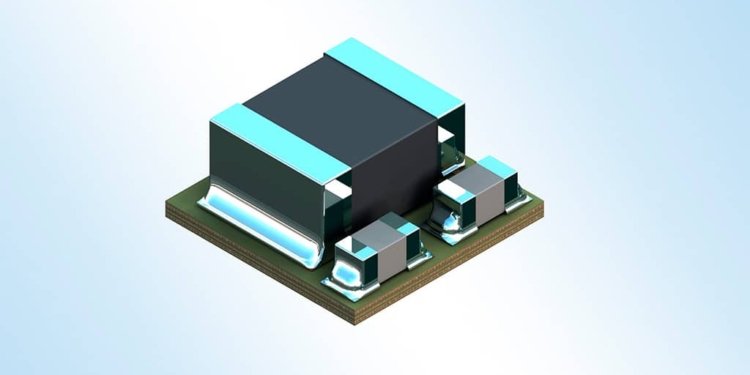Source: TDK news
TDK introduces a new series of µPOL™ power solutions as ‘a new era of power management solutions’ with increased performance, smallest available size, ease of use and simplified integration.
TDK Corporation (TSE:6762) announces the new series of µPOL™ DC-DC converters, the industry’s most compact and highest power density point-of-load solutions for applications such as big data, machine learning, artificial intelligence (AI), 5G cells, IoT and computing enterprise.
Rather than using side by side discrete integrated circuit (IC) and discrete inductor (L) the new FS series integrates the IC and inductor in a compact configuration which offers a high-density solution for space-constrained applications requiring a low-profile power source.
At 3.3 x 3.3 x 1.5 mm, they minimize the required external components, retaining the highest possible performance while offering a simplified design for ease of integration. This family can deliver a high density solution of 1 watt per mm3, up to 6A rated current while offering 50% less solution size than the other products available in its class. As a result, this minimizes system solution cost, reduces board size and assembly costs, as well as BOM and PCB costs. It operates at a broad junction temperature range, from -40 °C to 125 °C. Mass production of FS1406 is expected to begin in Q3 2019.
TDK has been developing patents related to these innovations (US 9,729,059 and US 10,193,442) over several years. µPOL™ were developed by TDK’s group company Faraday Semi. These new solutions incorporate high-performance semiconductors in advanced packaging technologies such as semiconductor embedded in substrate (SESUB) and advanced electronic components to achieve unique system integration in a smaller size and lower profile by 3D integration. This integration allows TDK to deliver higher efficiency and ease of use at a lower total system cost to what is currently available today.
μPOL™ technology includes a DC-DC converter placed in the vicinity of complex chipsets such as ASICs, FPGAs and others. By minimizing the distance between the converter and the chipset, the resistance and the inductance components are minimized, allowing fast response and accurate regulation with dynamic load currents.
The product family is rated for industrial application, is lead free and has ROHS compliance.
TDK will be showcasing its µPOL™ technology at APEC 2019 from March 18 to 20 at the Anaheim Convention Center in Anaheim, CA at booth 811.
Glossary
μPOL™ and nPOL™ are integrated DC-DC converters placed in the vicinity of complex ICs such as ASICs, FPGAs, and others.
Main applications
- Network Storage: Enterprise SSD / Storage Area Network
- Servers: Main Stream Server, Rack and Blade Server, Micro Server
- Netcoms and Telecoms: Ethernet Switch and Router and 5G Small Cells and 5G Base Stations
- Automotive (Future)
Main features and benefits
- Footprint of 3.3 x 3.3 x 1.5 mm
- Output of 1 watt per mm3, up to 6A rated current with 50% less required capacitance than existing products
- Suitable for a junction temperature range from -40°C to 125°C
- μPOL™, nPOL™ and The Future of Integrated Technology™ are registered trademarks of Faraday Semi.































